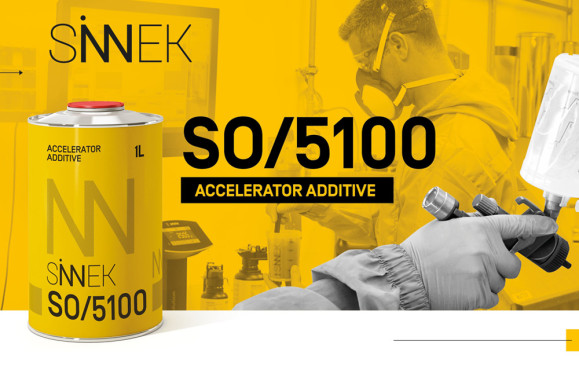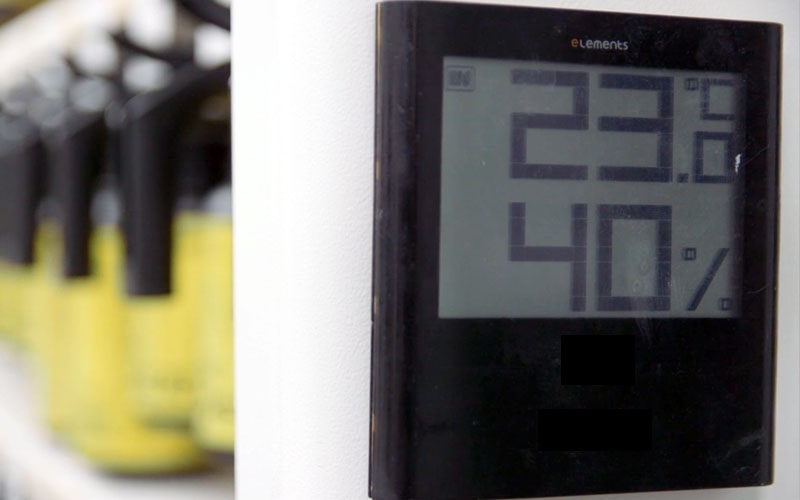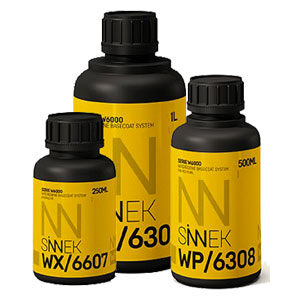
With the arrival of the cold and wet wintery weather, we may sometimes have to adapt some of our repair processes at the workshop to optimise the workflow.
As we pointed out in the summer post, the ambient temperature directly affects the rheological properties of paints, putties, hardeners and clearcoats.
Despite the high solid content of the modern paints used in the refinishing sector, when painting in extremely cold and damp conditions,professional painters adapt their paint preparation, application and drying processes.
Tips for optimising car repainting in winter
Regardless of the weather conditions, if you follow a set of guidelines and practical tips, you will obtain excellent resultswhen painting a car in winter.
1. Use of special additives
A recommended practice for improvingthe performance of the paint in cold and damp environments is the use of special additives.
An example of this type of product is SINNEK’s WA/6080 FAST DRY ADDITIVE, an easy-to-use and easy-to-apply additive that reduces the drying and hardening time of colour bases in this type of extreme environment, significantly increasing the profitability and productivity of each repair.

The use of special additives will help us optimise drying times in winter.
This type of product can also be used to preventmasking-tape marks from appearingwhen painting stripes.
Following this line of innovation to combat low temperatures, the new SO/5100 Accelerator Additive stands out. This additive has been specifically developed to optimize the performance of the Series W6000 waterborne basecoat system in adverse weather conditions.

Its formula allows for a reduction in flash-off times by between 20% and 30%, which is fundamental when cold and humidity slow down drying. Thanks to this improved performance, the professional not only ensures a more uniform, defect-free application in winter but also achieves greater energy efficiency by reducing spray booth occupancy times.
2. Follow the instructions on handling and storage temperatures
Since body paint is a chemical product, its properties can vary if the ambient temperature is too low.
To ensure a correct chemical reaction between the paint and its hardener, the paint should ideally be applied at a temperature between 20º and 25ºC.

When storing products, the ambient temperature should be between 15º and 30ºC. Below these temperatures, the product’s viscosity and sprayability may vary.
In extremely cold environments, we must be especially careful to prevent water-based products from freezing. It is always advisable to store these products at above 5ºC.
3. Adjusting the paint viscosity
The cold increases paint viscosity. Pay special attention to the paint’s temperature and appearance when it is mixed.
Over-diluting the mixture may result in a repair with insufficient coverage.
If the product is too cold, it will be more viscous, so to apply it properly we must increase the dilution.

However, we should not dilute the mixture too much, as this will increase the risk of not sufficiently covering the repair area.
4. Warming the vehicle in the booth
Cold and damp not only affect the paint and its application, they also directly influence the substrate’s temperature; that is the temperature of the part to be painted.
A good solution is to put the vehicle or parts to be repaired in the booth before starting the repainting process.
In the booth we can control the ambient temperature and humidity as well as accelerating or slowing down the application and drying processes.
5. Thermal shock
The surface temperature of a vehicle that has been leftoutdoorson a winter day will be too low.
If we put a vehicle in the booth and paint it without previously bringing it to ambient temperature, we run the risk of the paint not adhering properly.
This is cause bythe sudden difference in temperature between the body and the booth and by the potential presence of humidity in the room. This thermal shock causes surface condensation, which may cause repainting problems.
Thermal shock occurs because of thedifference in temperature between the body and the cabin.
This phenomenon will be more prevalent in very humid environments. To prevent this, the product must be applied when the temperature is at least 3 degrees above the dew‑point temperature.
6. Correct surface preparation
In winter, it is common for cars to enterthe workshop with traces of dirton their surfaces. This may be grease, oil or dust, or salt, which is used against ice and snow on the road.
Correct washing and pre-cleaning of the surfaces will help obtain an optimum topcoat finish.
As an additional tip, because salt residues will only dissolve in water, clean the vehicle with soap and water. Once the salt has been removed, degrease the part thoroughly.
7. Follow the established evaporation times
Once the products and the vehicle are at ambient temperature, you can start applying the products.
In winter, products take longer to evaporate because of the low temperatures.
So, to ensure the paint dries and fixes properly, in some cases it will be advisable to slightly increase the evaporation timesgiven in the product’s technical data sheet.
Conclusion
Following these tips when applying paint in extremely cold conditions will improve the quality of your work and minimise the chances of errors occurring when you repaint a car.
If temperatures are low for most of the year where you work, take the necessary measures to keep up your bodywork and paint repair profit and productivitylevels.



